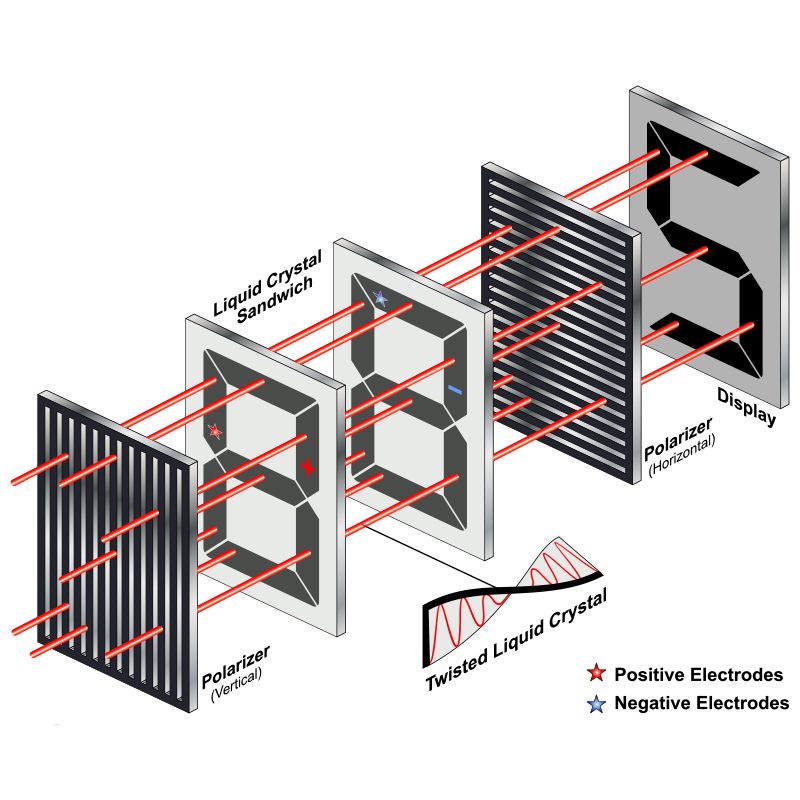When buying a PC monitor or a new smartphone, it’s very common to see the word IPS display between the specifications and features of the new device we’re going to buy. But what exactly is an IPS display and what are its benefits? We explain everything in this article.
A screen’s panel technology is important because it affects what the screen can do and for what applications it is best suited. There are different types of screens, each with their own advantages and disadvantages. The choice of the panel to buy depends largely on your intended use and your personal preference. Considering how different the requirements of players, graphic artists and office workers are, there is no difficulty in imagining that there are certain types of monitors that are better suited to each scenario with different uses.
LCD or “Liquid Crystal Display” is a type of panel that consists of thin layers of liquid crystals arranged between two layers of filters and electrodes. While CRT monitors have been used to deliver electrons to glass surfaces, LCD monitors operate with backlighting and liquid crystals. The LCD panel is a flat web of material containing layers of filters, glass, electrodes, liquid crystals, and backlighting. Polarized light, i.e. it only shines in one plane, acts on and passes through a rectangular grid of liquid crystals.
What is an IPS display on a mobile phone or PC monitor?
Liquid crystals (LCs) are used because of their unique ability to maintain a parallel shape. LCs as solids and liquids are able to react quickly to changes in the light pattern. The optical properties of LCs are activated by the electric current that switches liquid crystals between phases. Each pixel, in turn, produces an RGB color (red, green, blue) based on the phase it is in.
IPS monitors or In-Plane Switching monitors take advantage of parallel aligned liquid crystals to produce vibrant colors. IPS panels are defined by the changing patterns of their liquid crystals. These monitors are designed to overcome the limitations of TN panels in color rendering and offer wide viewing angles. The ability of the liquid crystal to move horizontally in these IPS panels provides better viewing angles.
Variations of the IPS monitor include S-IPS, H-IPS, e-IPS and P-IPS and PLS, the latter being the last iteration. Since these variations are very similar, they are all referred to together as “IPS” panels. They all say that they offer the main advantages of IPS monitors: excellent colors and ultra-wide viewing angles.
Advantages and disadvantages of an IPS display
IPS panels continue to be the preferred visualization technology for users who want color accuracy and consistency. These IPS panels are really great in terms of color performance and super-wide viewing angles. The generous viewing angles of the IPS monitors enable exceptional color reproduction from different viewing angles. An important difference between IPS monitors and TN monitors is that the colors on an IPS monitor do not shift when viewed from such a drastic angle as on a TN monitor.
When it comes to color accuracy, IPS monitors are way ahead of TN and VA. While next-generation VA technologies offer comparative performance specifications, pro users still claim that IPS monitors are the right choice in this respect. Another important feature of IPS monitors is that they can support professional color space technologies such as Adobe RGB. This is because IPS monitors can offer more colors that can be displayed, which improves color accuracy.
IPS panels offer a horizontal and vertical viewing angle of 178 degrees. Graphic designers, CAD engineers, professional photographers, and video editors benefit from using an IPS monitor. Many users appreciate the color benefits of IPS monitors and technological advances have improved the speed, contrast, and resolution of the IPS panel. IPS monitors are more attractive than ever for general desktop work and many types of games. They are even versatile enough to be used in different types of monitors.
In the past, response time and contrast were the first weaknesses of IPS technology. Today, however, the response times of IPS monitors are so advanced that they are even able to satisfy gamers, leading to an increasing popularity of IPS game monitors. With regard to games, some criticism that IPS monitors involve more visible blurred motion as a result of slower response times, however, the effect of motion blur will vary from user to user.
This concludes our special article about an IPS screen on a mobile phone or PC monitor, you can leave a comment if you have any suggestions to add.
